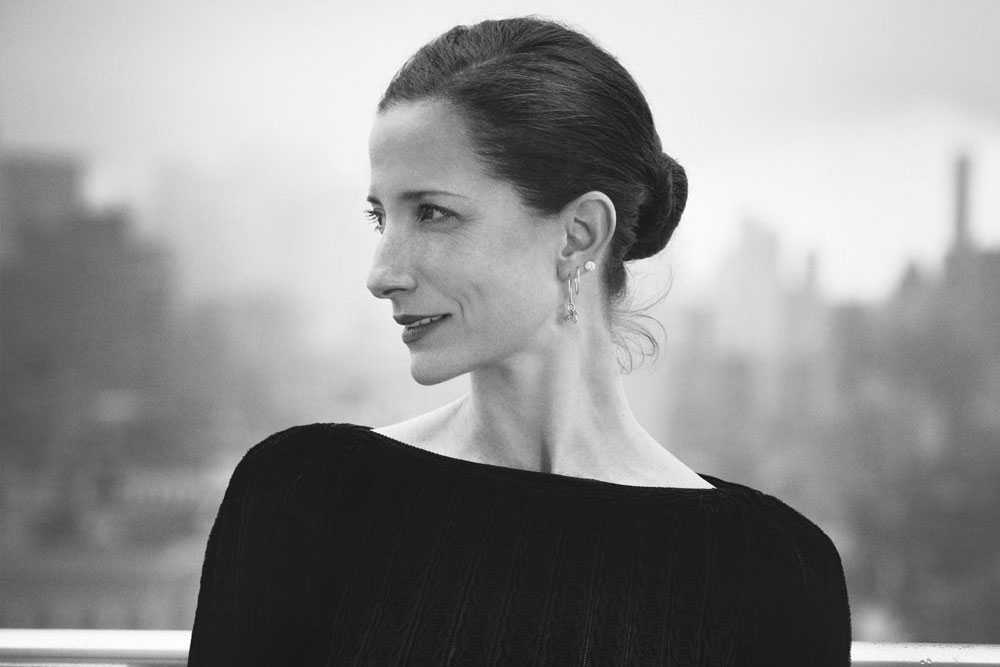
Vanessa Friedman is the New York Times fashion director and chief fashion critic. Before moderating the Zócalo/Natural History Museum of Los Angeles County event “Does Power Dressing Have the Power to Change Politics?,” she shared stories in the green room about reading Joan Didion in high school, the most ordinary thing she’s looking forward to after COVID, and the fashion of the moment.
What’s something that you’ve been listening to lately?
I have two children who go to school in Massachusetts, so we’ve been doing a lot of road tripping between New York and Massachusetts. And I really liked to listen to Johnny Cash. I spent a lot of time in the car listening to the At Folsom Prison record.
What was the first fashion trend that got you excited?
Benetton. I’ll never forget when Benetton arrived in my high school. I was completely gobsmacked by it. Suddenly all these kids arrived in coordinated knitwear. I’d never seen anything like it. At that point, we’d all been wearing clogs, and, like, old corduroys.
What were some of your favorite haunts in New York growing up?
When I was living in New York after college, Benny’s Burritos, because we could eat the most food for the least amount of money. And the Second Avenue Deli [for the chicken soup].
What’s your most formative book?
I am such a cliché. The most formative book I ever read was Joan Didion in high school—Play It as It Lays. And then I read everything she wrote. For me, it was about her authorial voice and the rhythms of her sentences. I literally think I read that book and sat down and wrote a short story—which was insanely derivative! I was in high school, so it was about a boy and a girl. Every story I wrote in high school was about boys and girls.
Speaking of writing, as a history major at Princeton, you wrote a historical novel for your senior thesis on Germany’s Weimar Republic and the Bauhaus School. What was it about that period that captured your attention?
I was fascinated by Weimar. I started being fascinated by it my junior year of college. I was really interested in Germany—and Germany between the wars—coming from a family that is almost entirely Eastern European, and has no history beyond when it arrived in America after the pogroms. So I was interested in this very specific, very creative time, and the idea of all these insanely talented architects, artists, and inventors living together in this one space. And I was very interested in the parallels between the politics of Germany at the time and what was happening at the school. At the time, I was also a minor in creative writing, so I thought it would be more fun to tell that story through a story, as opposed to simply through a piece of analytic writing. And I convinced them to let me do it.
At the moment, I’m on the advisory committee for the history department there, and I was talking to one of my [college] thesis advisors, who had been my professor in the history department, who’s actually a German economic historian, and he said, I still can’t believe we let you do that! I think they were just so surprised by the request that they didn’t really know what to say.
What’s the last TV show that you watched?
Ted Lasso. As someone who lived in London for 12 years, they really got the British football scene.
Is there a recent fashion trend that’s caught your eye?
I was really struck in the last round of shows—which literally ended last week—by how much designers believe that we’re going to be dressing up, and dressing up in major ways: in color, sparkles, and crazy, fake furry things. Big shapes and big skirts and feathers. I just think there is going to be this explosion of a desire to express ourselves in really exhilarating ways—let loose again.
What’s the most ordinary thing that you’re looking forward to in a post-COVID world?
I’m really looking forward to people being without masks—just seeing faces on the street that aren’t masked.



